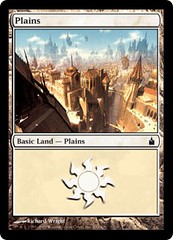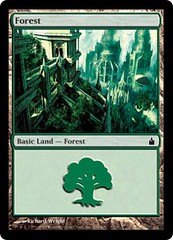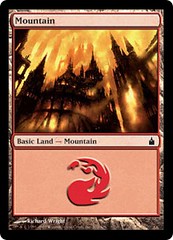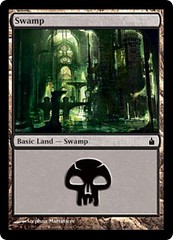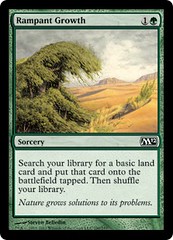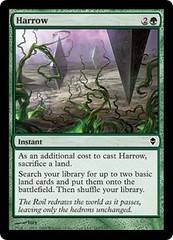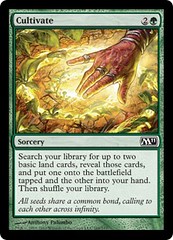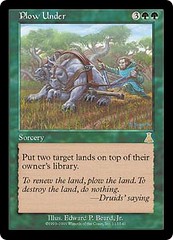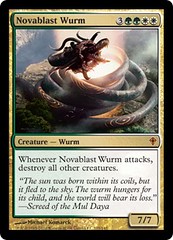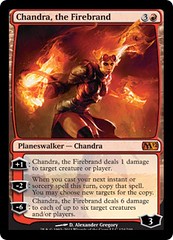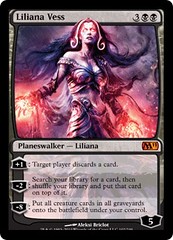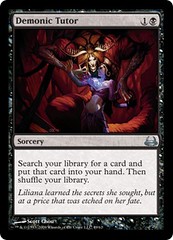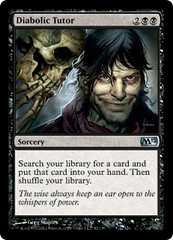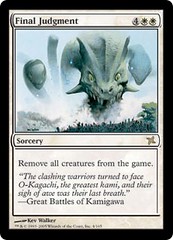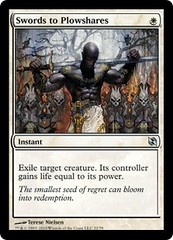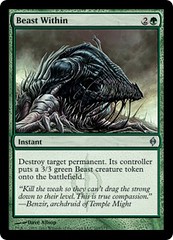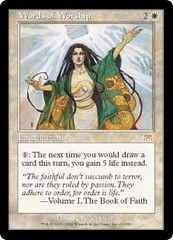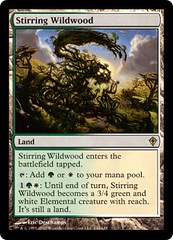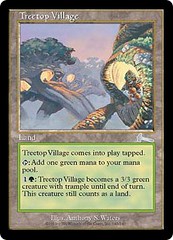I'm finding AC:BH a very tedious game to play through, and every time I play it, I soon wish I was playing AC2 instead. The mechanics are essentially the same, yet the disparities in narrative and mission design overwhelm the similarities and pros it has with AC2. To me, Brotherhood feels severely disjointed, to the point that it starts disrupting the narrative's flow. So many parts of the game feel like a chore; even Ezio feels more like Ezio: Runner of Errands rather than the excellent character he was in AC2. The strict mission design isn't necessarily difficult, but I often find myself running out of time simply because I took a few seconds to get my bearings and figure out how exactly I would get to the objective. I realize its more like real life when you only have a small window, but games aren't supposed to be real. I think there's too much confusion between plausibility and realism. For me, Brotherhood is too focused on the plausible--it attempts to shoehorn in a bunch of requirements because, well, Desmond is exploring Ezio's memories and must therefore adhere to his historical actions.
The problem is that the game is supposed to be free roaming and open world, which is in direct conflict with the premise of replicating the ancestor's memories. What I liked about AC2 so much was not just the variety, but the game was more flexible; I felt there was greater freedom in approaching any one task. I felt I had greater freedom to approach a situation how I chose. In Brotherhood, however, any one mission will have a big checklist of requirements and failure of these results at worst in restarting the level, or at best, getting only 50% synchronization. And there's another contrived problem there. I feel the whole 50/100 sync thing was merely there to cater to trophy whoring and bragging rights. The level of sync and the requirement itself are totally arbitrary. How is it that swimming when I wasn't supposed to (even though it was the most logical step) is weighed just as heavily as finishing the mission--you know, where I stopped a misinformed assassination and saved one of our leaders? The half synchronization is a minor gripe, however, because I'm more concerned with how the instant-fails affect the flow of the narrative. Too often, I found myself simply doing things by trial-and-error--which, by itself, isn't a bad thing; games like World of Goo or Portal 2 are good because they cause you to think about your mistakes. But with a game like Brotherhood, where narrative and flow are (or should) be such crucial components of the experience, trial-and-error kills the pacing.
I miss Venezia, Toscana, and Firenze. To be honest, I don't like Roma very much, and the sheer size of it makes for tedious travel. The visual style isn't as vibrant and everything has a rather grungy look. The lairs of Romulus are rather disappointing as well. I loved the Assassin's Tombs--maybe because I love spins on iconography. I mean, there's an assassin's tomb at the top of the freaking Duomo and another in the San Marco Basilica. These were gorgeous set-pieces and covered a very wide variety of locales (not only polished cathedrals, but grungy dungeons deep below the fortress walls). The Romulus lairs, however, all exude the same grungy look (I still have one more to finish but I'm not holding my breath) that makes it difficult to see what I can jump onto and pretty much forces me to do everything by trial and error. It's not that any of these dungeons (AC2 or BH) are particularly difficult, but the ones in AC2 actually try to give a decent (fun) sort of challenge, whereas the BH ones just give you tedious ones.
I'm not sure I like the combat tweaks either; most of them feel unnecessary. I don't like the offensive approach, because I find myself button mashing more. Sure, it's faster, but combat feels sloppier. The gunblast "finisher" seems kind of pointless, too. I'm a trained assassin and I just ran him through with a sword. Is a gunblast to the face really necessary? And the recruits--the thing I was most looking forward to--are kind of cheap, to the point that the combat becomes disappointingly vicarious. I actually have to force myself not to use them because I find Ezio's skills (mine) will get soft if I just L2 a nice, easy insta-kill.
If my use of the recruits is indicative of anything, it's that Ezio isn't just becoming an errand runner; he's become a half-assed errand runner and letting others do his dirty work for him. This isn't just my play style, however. I think the writers have actually made me like Ezio less. It's not that they made him repugnant; he's just totally uninteresting here. Everyone in this game (except for Bartolomeo) has lost their sense of humor and charm. da Vinci and Claudia, who were so vibrant and humorous in AC2, seem hardened and stoic in their new positions--da Vinci as a prisoner and Claudia as the brothel manager/assassin contact.
I guess what made the writing in AC2 good (very rare, I think, for any video game) was that it understood the difference between plot and story in developing a compelling narrative. For me, plot is next to meaningless in evaluating narrative. What value does story have if it's lacking in emotion? What value is a corpse without life? What good is a clothesline without clothes? Or a building without people? AC2 grounds its narrative (and pretty much all its missions) in a very concrete and identifiable situation. Ezio is young and inexperienced and the whole game sings with vibrancy and life. Brotherhood, by comparison, is all business--lots of business meetings, transactions and hires.
I guess that's about it. I like a lot of Brotherhood, but it's so tedious and grungy. I'm not even sure I want to finish it and it really does feel like a chore. Here's hoping Revelations doesn't make the same mistake.
hal0000 — Miscellaneous
Tuesday, October 25, 2011
Tuesday, October 11, 2011
MTG: Fog Burn Deck
Creatures:
4 Jaya Ballard, Task Mage
4 Dawnstrider
1 Jeska, Warrior Adept
2 Inferno Titan
4 Birds of Paradise
1 Furyborn Hellkite
1 Squee, Goblin Nabob
1 Grim Lavamancer
1 Spore Frog
Spells:
4 Fog
4 Rites of Flourishing
3 Fireball
Planeswalkers:
2 Chandra Nalaar
1 Garruk, Primal Hunter
1 Sarkhan Vol
Land:
4 Rootbound Crag
4 Raging Ravine
4 Terramorphic Expanse
Forest
Mountain
This deck originally started out as a RG spider burn-control deck using Arachnus Spinner and its web. There were also Deadly Recluses and Blightwidows. Creatures like Jaya Ballard would help keep creatures in check and Inferno Titan was the finisher. The problem was it played like an aggro deck but was far too defensive, and its greatest weakness was that most tests resulted in topdecking. To avoid this, I added Rites of Flourishing. It sped things up, but it couldn't keep up with the elf deck I use for testing.
I ended up going for fog effects to shut down any creature advantage the Rites would give to the opponent. Instead of going just for instants, however, I decided Dawnstrider would work better. First of all, it's on a stick. Second, Rites helps fuel the dryad's ability.
Fog effects provided a better defense than spiders because they were basically a "block everything" function. I found spiders were good, but they became overwhelmed by large numbers of elves combined with Overrun.
The win condition is virtually the same: Whittle their creature base with Jaya Ballard, Lavamancer, Jeska, and Chandra while pounding away with Inferno Titan.
I found the deck demolishes mono-green. The elf deck simply can't answer once Dawnstrider hits and green's creatures are generally quite vulnerable to red burn.
4 Jaya Ballard, Task Mage
4 Dawnstrider
1 Jeska, Warrior Adept
2 Inferno Titan
4 Birds of Paradise
1 Furyborn Hellkite
1 Squee, Goblin Nabob
1 Grim Lavamancer
1 Spore Frog
Spells:
4 Fog
4 Rites of Flourishing
3 Fireball
Planeswalkers:
2 Chandra Nalaar
1 Garruk, Primal Hunter
1 Sarkhan Vol
Land:
4 Rootbound Crag
4 Raging Ravine
4 Terramorphic Expanse
Forest
Mountain
This deck originally started out as a RG spider burn-control deck using Arachnus Spinner and its web. There were also Deadly Recluses and Blightwidows. Creatures like Jaya Ballard would help keep creatures in check and Inferno Titan was the finisher. The problem was it played like an aggro deck but was far too defensive, and its greatest weakness was that most tests resulted in topdecking. To avoid this, I added Rites of Flourishing. It sped things up, but it couldn't keep up with the elf deck I use for testing.
I ended up going for fog effects to shut down any creature advantage the Rites would give to the opponent. Instead of going just for instants, however, I decided Dawnstrider would work better. First of all, it's on a stick. Second, Rites helps fuel the dryad's ability.
Fog effects provided a better defense than spiders because they were basically a "block everything" function. I found spiders were good, but they became overwhelmed by large numbers of elves combined with Overrun.
The win condition is virtually the same: Whittle their creature base with Jaya Ballard, Lavamancer, Jeska, and Chandra while pounding away with Inferno Titan.
I found the deck demolishes mono-green. The elf deck simply can't answer once Dawnstrider hits and green's creatures are generally quite vulnerable to red burn.
Saturday, August 6, 2011
MTG: Land Fetch Deck
I don't really play much anymore, but I adore deck-building and flavor. I would say I'm a Johnny first, with a bit of Vorthos, not much Spike, and every so often I'll indulge my Timmy side. For me, at least, building decks with interesting synergy is the main draw of the game. I don't care too much about win-percentage but rather the narrative a deck creates; how well do these cards work with each other? While I want the deck to win, I don't stress out if I'm missing a playset of that crazy expensive card nor do I care if it's tournament legal.
Lately, I've been working on a deck that started out based on Manabond and Limited Resources. The idea was to use these two cards along with land fetchers (Cultivate) and Plow Under/Creeping Mold/Fallow Earth to shut down the opponent's land base. Mageta the Lion was intended to provide board control and was the only true creature (there were a lot of manlands like Treetop Village, Stirring Wildwood, Forbidding Watchtower, etc.). The idea was to implement Yawmoth's Bargain with Words of Worship to gain a lot of life and pump up Treetop Village with a massive Hatred.
Looking back, it's weird how much the current build differs. I guess my original motivation was creating something with the complexity of Prosbloom. Ironically, it came with the same flaws and clunky mechanics. Just to see how much the deck has evolved, here's the current list:
Lands (24)
5 x Swamp
1 x Mountain
5 x Forest
5 x Plains
4 x Treetop Village
4 x Stirring Wildwood
Creatures (1)
1 x Novablast Wurm
Spells (33)
2 x Diabolic Tutor
4 x Yawgmoth's Bargain
1 x Demonic Tutor
1 x Pernicious Deed
4 x Rampant Growth
4 x Harrow
2 x Cultivate
4 x Plow Under
3 x Beast Within*
3 x Final Judgment*
2 x Swords to Plowshares
3 x Words of Worship
Planeswalkers (2)
1 x Chandra, the Firebrand
1 x Liliana Vess
*I had to order these, so I haven't had a chance to test them. They're needed to deal with planeswalkers, indestructible creatures, shrouded stuff, etc.—things I had problems with in testing.
The biggest change is Manabond and Limited Resources are gone. Yep, I ditched the original premise. In testing the deck, I found the combo rather clunky and inconsistent. I found that when the combo was achieved, a simple Disenchant could mess up the whole thing. The idea of the combo was to limit the opponent to far fewer lands while accelerating land output via Manabond and other fetchers. The problem was the combo was sort of a one-time deal because if you started dumping lands with Limited Resources in play, having to reapply the Resources if it was destroyed would cause you to sacrifice back down to 5 lands. It was too much like building a tower out of cottage cheese.
What I did discover was the deck worked quite well even when it didn't draw the combo. Namely, Yawgmoth's Bargain and Words of Worship allowed excellent card advantage and simultaneously a defense of 40+ life per turn. The deck could draw the entire library and use Manabond to dump about 12 lands at once onto the field. I had Ob Nixilis, the Fallen in there for a long time as the main win condition—a one-shot kill in the tradition of Prosbloom.
The problem with the original design was it had to work with two engines, which took up a lot of space. It, like Prosbloom, devoted too many resources to setting up its combos. I found the deck lacking in board control and far too slow. Since so many lands were needed (28, at one point), dead drawing without the Bargain was common. I also found it incapable of handling enemy creatures—especially accelerators like Llanowar Elves, Birds of Paradise, Elvish Piper, etc.
As a note, I've been testing this deck the most against my Angel deck (yep, a brainchild of my inner Timmy) that runs lots of mana acceleration with Citanul Flute and Elvish Piper to pretty much pull out whatever creature is needed at the moment. It's actually a fairly consistent, aggressive deck; I don't particularly like big creature decks, but I've always wanted to make an angel deck and it makes for a good standard for me to test against.
Anyways, what I found was that, the Angel deck pummeled the land deck most the time because it was simply faster. Fast Lightning Angels along with a turn 4-5 Akroma were pretty brutal. Admonition Angel and Disenchant also screwed over such an enchantment heavy deck. I found Mageta, the Lion too slow to work consistently as well.
I don't want to go into the whole development, but looking at the current deck-list, I always think about what each card fixes about the original design.
1. Rampant Growth, Harrow, Cultivate
I originally started with only 4 Cultivate, but quickly switched to 3 Harrow and 4 Cultivate. I found Cultivate rather slow, and since both cost the same, having both in hand was kind of useless, regarding tempo. Rampant Growth is a little worse at deck thinning, but that one less CMC is extremely useful for two reasons. First, it can be cast a turn earlier, and since this deck really doesn't do much until turn 3, that's a plus. Second, it can be cast on the same turn after a Harrow, providing an additional land ramp.
Harrow really is the best, however, and my personal favorite of the three. Yes, counters are its Achilles' heel, but I think this deck is pretty weak against a Draw-go style anyway; I'm not designing this deck to be unbeatable by every deck type there is. Harrow is brilliant because not only is it instant speed, but those fetched lands can be used for the aforementioned Rampant Growth, Swords to Plowshares, another Harrow/Cultivate, or a Demonic Tutor to bring out a really fast Novablast Wurm. Other than the spell possibly being countered, I really don't see the sacrificed land as any big loss. Like Rampant Growth and Cultivate, Harrow provides deck thinning and mana acceleration, but more importantly, it preserves tempo within the turn.
I really love these land tutors because not only are they easy to find, but they create card advantage, accelerate, and thin the deck all at the same time. Since this deck runs 4 colors*, preventing mana screw would normally require lots of dual/rainbow lands, but it actually runs mostly basics (and stirring wildwood is the only multicolored land). These cards allow the player to choose their land composition on the field, which is crucial when running so many colors.
*This deck is designed around control, primarily through card advantage and tempo. I guess it's somewhat ironic that the only color it doesn't run is the one usually associated with control and card advantage (not tempo, though). Each color offers control and card advantage in its own way. Red control is excellent against creatures. Green has Plow Under and land tutors. Black has the best tutors available and discard. White has total board wipes. And blue can stop a spell before it ever resolves.
2. Plow Under
The original idea of using Manabond and Limited Resources basically centered around accelerating your mana base while attacking your opponents'. In testing, I discovered I could achieve the same effect using the land tutors along with Plow Under, Fallow Earth, and Creeping Mold. The first advantage is these can't be destroyed; once they resolve, you're good to go. Additionally, they work fine on their own. Also, Manabond required a hand filled with lands to be effective. Finally, all these wonderful instants and sorceries can be forked by Chandra, the Firebrand.
Plow Under disrupts opponents' mana bases if they're relying on lands and ensures that they don't have a chance for lucky topdecking. When forked by Chandra, it provides enough time to set up Novablast Wurm for the win while minimizing the likelihood of any surprises from the opponent.
3. Novablast Wurm
I've always liked the idea of decks that only have one or two creatures in them. Originally, the deck relied solely on man lands to win, pumping them up with one big Hatred and using board wipers to clear the field. I had Mageta for a while, but he's too slow. Ob Nixilis made an interesting win condition given the ability to draw the entire deck with the Bargain and then dump all lands into play. Ob Nixilis was useful and the life loss was harder to prevent, but the whole strategy was rather clunky and didn't come up consistently. I also had Admonition Angel for a while, but again, it was inconsistent. The Hatred win condition barely came up at all and when it did, it felt contrived.
Enter Novablast Wurm. Not exactly creative, but I think it fits well in the deck. Since it's literally the only creature card, it can attack with impunity. It's big, so it kills quickly. And, most importantly, it doubles as a board wipe. It's also a very flavorful creature, and it makes sense because the beast is so powerful, the planeswalker wielding it can't control any other creatures (except those that hide as man-lands).
4. Chandra, the Firebrand
I originally selected a planeswalker to handle creature-based mana. Attacking lands is pointless if the opponent has alternate sources. Things like Llanowar Elves, Birds of Paradise, Noble Hierarch, and Elvish Piper can help bypass land removal and render the control element useless. A repeatable pinger was therefore ideal, and Chandra, the Firebrand's +1 seemed the best choice for handling all the 1/1's or 0/1's. Chandra is the only red card in the deck, but her mana cost makes her easy to cast; she's actually used quite frequently, even if it's just to copy a single crucial spell (usually Plow Under, although doubling a Diabolic/Demonic tutor, Swords to Plowshares, or land tutors are excellent uses of the ability as well). Typically, I found Chandra was only good [alive] for a turn or two, but she frequently provided the final nail in the coffin.
The other great benefit of removing Manabond and Limited Resources and replacing them with sorceries/instants is Chandra, the Firebrand becomes that much more useful. Her ability to copy spells, while usually reserved for Plow Under, has proven more versatile than my original intentions for it. Her final ability, too, can be used as a finisher if Novablast Wurm should die. Only one copy is really needed because Diabolic Tutor, Demonic Tutor, and Liliana can all tutor for her. Additionally, deck thinning and Yawgmoth's Bargain increase the odds of finding her the traditional way.
5. Liliana Vess and the Black Tutors
Originally, it was her -2 ability that attracted me the most. Since there's only a single copy of game-breakers like Novablast Wurm, Pernicious Deed, or Chandra, there needs to be a way to pull them up when needed. Yawgmoth's Bargain helps, but the black tutors and Liliana streamline the process. Liliana makes Bargain much more efficient.
I originally planned on using only her tutor ability, but I've discovered her +1 has a bit of synergy with Plow Under. Each activation of her +1 reduces the power at the opponent's immediate disposal, since Plow Under prevents new material for a few turns and the opponent only has what's in hand.
6. Pernicious Deed, Final Judgment, Swords to Plowshares and Beast Within
Most removal here is to handle creatures. Why only one Pernicious Deed? Because I only have one from Apocalypse—the block I lucked out with the most, booster pack-wise. Novablast Wurm is another board wipe tool, but I've decided to add Final Judgment for how thorough it is. The deck still can't handle indestructible enchantments or non-creature artifacts, but at the very least, it can deal with all the "invincible" creatures that seem to have cropped up recently (Progenitus, the Eldrazi, etc.).
I originally had 4 Doom Blades, but Swords to Plowshares is much better and more versatile. There should be 4, but the only ones I have are from the Elspeth vs. Tezzeret Duel Deck. I currently use Creeping Mold (better than Naturalize for this deck, because it also targets lands), but I'm replacing it with the more versatile Beast Within when those arrive.
7. Yawgmoth's Bargain and Words of Worship
This combo's game-breaking, but not vital. If it goes off, 10 lands nets 40 life a turn. Given the mana acceleration of the deck, this is well within reason. More importantly, this large amount of life gain overcomes the only weakness of the otherwise overpowered Bargain, giving unparalleled freedom with card drawing power. It's unrealistic, but the combo also provides an alternate win condition: if the opponent has some way of avoiding damage but can't deal more than 30-40 damage per turn, the combo can simply gain so much life the opponent eventually decks.
An interesting note, but when I tested this against my mono-blue artifact deck, I found indestructible Sharding Sphinxes (I still don't have Final Judgment in the deck, officially) were able to surpass the combo's lifegain. This is actually what provided the incentive to upgrade to to Final Judgment.
8. The Land Base
I had some difficulty with finding the appropriate land base. Originally, I had 28 lands with 4 land tutors, but there were too many slow, useless land draws. The deck would have board advantage, but lose due to slow draws when the Bargain wasn't drawn or got destroyed. I tried 26 lands with 7 land tutors, which worked better, but still got bad draws mid-game. I've settled on 24 lands with 10 land tutors. Drawing a tutor is better than drawing a land because Rampant Growth counts as 2 cards and Cultivate/Harrow count as 3.
I used to have Forbidding Watchtower, but found it only used for mana, so Plains was a better, faster choice. I haven't given much thought to precise color ratios, but basically, there needs to be a lot of green mana. Those first land tutors are essential.
Treetop Village and Stirring Wildwood are good choices because they're a good balance between defense and, in a pinch, offense. Having a defense against fliers, too, is useful. Plus, they survive Novablast Wurm, Final Judgment, Pernicious Deed, etc.. so can attack as an alternate win condition if needed.
9. Weaknesses
This deck is designed to deal with creatures and lands. These are extremely common elements of the game, so the idea was to create a consistent, yet unique deck. It has greater difficulty against artifacts, so sideboards of additional artifact destruction might be good.
There is almost no protection for Novablast Wurm, so it's vulnerable when it comes out. Plow Under offers some protection because it prevents the opponent from drawing creature destruction/removal. Also, once Novablast Wurm dies, there's no way to bring it back and the deck must rely on slower, less powerful man-lands, which not only tie up mana, but also allow the opponent to recuperate.
I haven't tested it against Draw-Go, but I imagine countering Rampant Growth, Cultivate, or worst of all, Harrow could break the deck's entire strategy since the land composition on the field is so important.
Subscribe to:
Posts (Atom)
